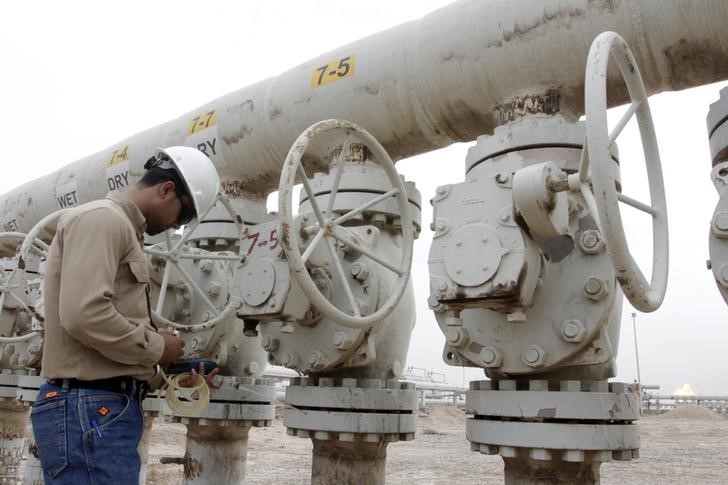By Amanda Cooper
LONDON (Reuters) - Oil investors are finally buying into the notion that the biggest risk to the price now is likely to be supply falling short of demand, rather than from any stubborn overhang of unwanted crude, the options market shows.
The price of Brent crude has hit $52 a barrel, virtually double January's near-13-year lows, driven primarily by a decline in global production that has been speedy enough to bring supply and demand into line faster than many had anticipated.
"In the end, you will see global oversupply, at some point diminish, and in effect even earlier than speculators realise," ABN Amro chief energy strategist Hans van Cleef said.
In the last year, nearly a million barrels per day (bpd) have vanished from higher-cost U.S. output, one of the key contributors to the surplus that built up since the Organization of the Petroleum Exporting Countries voted in late 2014 to sacrifice price strength for market share.
Coupled with that, unplanned outages, from wildfires in Canada, to violence in Nigeria and political or economic unrest in Venezuela and Libya, have reached their highest in five years, taking as much as 4 million bpd offline last month.
For the last two years, volatility, a measure of the cost of owning a particular option, has been at its highest on deeply unprofitable, very near-term put options, or those that give their owner the right, but not the obligation, to sell oil at a given price by a set date.
To an extent, that bias reflected the fear among investors of a sudden, and potentially profound, downside shock for the oil market.
The skew has now shifted to unprofitable, or out-of-the-money, put options maturing almost a year out, for the first time since 2014.
This switch would suggest investors are a lot more confident about the prospect of a more sustained rally in the oil price and much of the concern over the extent of the overhang of unwanted crude held in storage tanks, or even on ships, appears to have evaporated.
LABELLING THE MARKET
"It's part of that switch from moving from pricing inventories being accumulated to trying to price up how fast inventories will be run down. It's a different trading structure," Standard Chartered (LON:STAN) head of commodities research Paul Horsnell said.
Volatility on out-of-the-money puts maturing next April at a strike price of around $35.35 a barrel is around 45 percent, compared with around 35 percent for out-of-the-money puts maturing in one week's time with a strike price of $49.42.
"Everything starts and finishes with 'what sort of market is this? Is there excess demand or excess supply?'... As soon as you start saying it's in excess demand, then a lot of those factors that are driving time structure and the volatility surface, which was 'there's a risk of running out of inventory storage space and storage is going to be full to the max' ... go out of the window," Horsnell said.
Highlighting this growing faith in oil's prospects for this year, is the shrinking of the premium, or contango, of Brent futures contracts for delivery of crude further ahead over those for prompt delivery.
The contango between the front-month Brent futures contract (LCOc1) and December 2017 futures has fallen below $3.00 a barrel, less than half of what it was just three months ago.
"...You see signals that global economic growth may be fragile, but there is still growth, especially in emerging Asia and oil demand will remain solid there," ABN Amro's van Cleef said. "So that will balance the market in the second half of the year and therefore justifies current prices, if not even higher prices."
